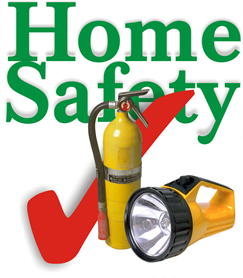 Studies show that the ratio of indirect costs to direct costs varies widely, from a high of 20:1 to a low of 1:1. OSHA has shown that the lower the direct costs of an accident, the higher the ratio of indirect to direct costs (ranging from 4.1/1.0 to 1.1/1.0). Examples of indirect costs include training replacement employees, accident investigation and implementation of corrective measures, lost productivity, repairs of damaged equipment and property, and costs associated with lower employee morale and absenteeism.
Studies show that the ratio of indirect costs to direct costs varies widely, from a high of 20:1 to a low of 1:1. OSHA has shown that the lower the direct costs of an accident, the higher the ratio of indirect to direct costs (ranging from 4.1/1.0 to 1.1/1.0). Examples of indirect costs include training replacement employees, accident investigation and implementation of corrective measures, lost productivity, repairs of damaged equipment and property, and costs associated with lower employee morale and absenteeism.
Category: Safety
Lightning Kills
 Lightning is one of nature’s most awe inspiring and dangerous phenomenon. The average lightning flash could light a 100-watt light bulb for more than 3 months! The temperature of a lightning bolt may reach 50,000 degrees Fahrenheit which is hotter than the surface of the sun!
Lightning is one of nature’s most awe inspiring and dangerous phenomenon. The average lightning flash could light a 100-watt light bulb for more than 3 months! The temperature of a lightning bolt may reach 50,000 degrees Fahrenheit which is hotter than the surface of the sun!
On average, lightning kills about 73 people nationwide per year. In fact, lightning remains one of the most deadly weather phenomena in the U.S., and it can occur almost anywhere throughout the entire year. Lightning occurring during snowstorms has even killed people! Many people incur injuries or are killed due to misinformation and inappropriate behavior during thunderstorms. A few simple precautions can reduce many of the dangers posed by lightning.
via Lightning Danger.
Electrical Safety
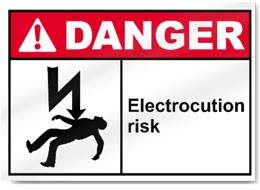 Electrical current exposes workers to a serious, widespread occupational hazard; practically all members of the workforce are exposed to electrical energy during the performance of their daily duties, and electrocutions occur to workers in various job categories. Many workers are unaware of the potential electrical hazards present in their work environment, which makes them more vulnerable to the danger of electrocution.
Electrical current exposes workers to a serious, widespread occupational hazard; practically all members of the workforce are exposed to electrical energy during the performance of their daily duties, and electrocutions occur to workers in various job categories. Many workers are unaware of the potential electrical hazards present in their work environment, which makes them more vulnerable to the danger of electrocution.
via CDC – Electrical Safety – NIOSH Workplace Safety and Health Topic.
10 Safety Tips for College Students
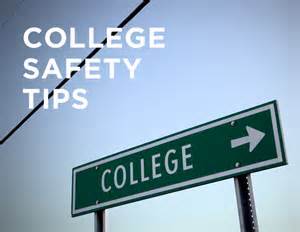 If you’re helping your son or daughter pack-up for college, tuck these tips into their suitcase to help them stay safe on campus:
If you’re helping your son or daughter pack-up for college, tuck these tips into their suitcase to help them stay safe on campus:
- Most campuses have a “panic phone” system. Know where these are.
- Have a safety buddy, someone you can call for a ride or for help, and create a code word or phrase that means “Come help me out of this” or “I’m in trouble.”
- Before going to a party, tell a friend where you’re going and when you’ll be back. Let them know if your plans change.
- Take turns being a designated driver or sober companion. You could save someone’s life.
- If a party gets out of hand, leave!
- Never, ever leave your drink alone or with someone you don’t know. Date rape drugs are easy to use. And men are just as vulnerable as women.
- Don’t take drinks or anything else from strangers, even food.
- Don’t ride with drunk or drugged drivers.
- Don’t offer rides to people you don’t know.
- Trust your instincts!
And here’s what parents can do:
- Ask the college administrators about campus alcohol policies.
- Talk to your kids about the legal penalties for underage drinking.
- Discuss the possible consequences of drinking, including date rape, violence and school interference.
- Know your child’s roommate and living arrangements.
- Call your son or daughter frequently.
via 10 Personal Safety Tips for College Students | SafetySmart Xchange.
What are the major changes to the Hazard Communication Standard?
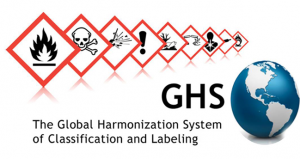 The three major areas of change are in hazard classification, labels, and safety data sheets.
The three major areas of change are in hazard classification, labels, and safety data sheets.
- Hazard classification: The definitions of hazard have been changed to provide specific criteria for classification of health and physical hazards, as well as classification of mixtures. These specific criteria will help to ensure that evaluations of hazardous effects are consistent across manufacturers, and that labels and safety data sheets are more accurate as a result.
- Labels: Chemical manufacturers and importers will be required to provide a label that includes a harmonized signal word, pictogram, and hazard statement for each hazard class and category. Precautionary statements must also be provided.
- Safety Data Sheets: Will now have a specified 16-section format.
The GHS does not include harmonized training provisions, but recognizes that training is essential to an effective hazard communication approach. The revised Hazard Communication Standard (HCS) requires that workers be re- trained within two years of the publication of the final rule to facilitate recognition and understanding of the new labels and safety data sheets.
via Hazard Communication.
Safe Patient Handling
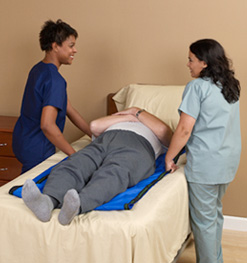 Rates of musculoskeletal injuries from overexertion in healthcare occupations are among the highest of all U.S. industries. Data from the Bureau of Labor Statistics (BLS) show that in 2011, the rate of overexertion injuries averaged across all industries was 38 per 10,000 full time workers.By comparison, the overexertion injury rate for hospital workers was twice the average (76 per 10,000), the rate for nursing home workers was over three times the average (132 per 10,000), and the rate for ambulance workers was over six times the average (238 per 10,000). The single greatest risk factor for overexertion injuries in healthcare workers is the manual lifting, moving and repositioning of patients, residents or clients, i.e., manual patient handling.
Rates of musculoskeletal injuries from overexertion in healthcare occupations are among the highest of all U.S. industries. Data from the Bureau of Labor Statistics (BLS) show that in 2011, the rate of overexertion injuries averaged across all industries was 38 per 10,000 full time workers.By comparison, the overexertion injury rate for hospital workers was twice the average (76 per 10,000), the rate for nursing home workers was over three times the average (132 per 10,000), and the rate for ambulance workers was over six times the average (238 per 10,000). The single greatest risk factor for overexertion injuries in healthcare workers is the manual lifting, moving and repositioning of patients, residents or clients, i.e., manual patient handling.
via CDC – Safe Patient Handling – NIOSH Workplace Safety and Health Topic.
THE “WRONG” WAY TO USE A LADDER
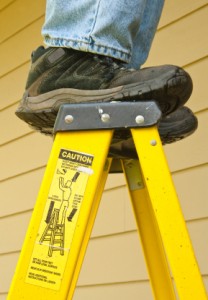 DON’T stand above the second step from the top of a stepladder or the fourth rung from the top of an extension ladder.
DON’T stand above the second step from the top of a stepladder or the fourth rung from the top of an extension ladder.- DON’T climb a closed stepladder.
- DON’T climb on the back of a stepladder.
- DON’T stand or sit on a stepladder top or pail shelf.
- DON’T climb a ladder if you are not physically and mentally up to the task.
- DON’T place the base of an extension ladder too close to or too far away from the building.
- DON’T over-reach, lean to one side or try to move a ladder while on it. Climb down and then reposition the ladder closer to your work.
- DON’T exceed the maximum load capacity or duty rating of a ladder.
- DON’T permit more than one person on a single-sided stepladder or an extension ladder.
Child Safety
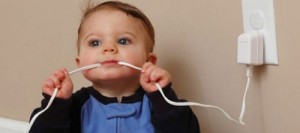 As parents, we want to keep our children safe from harm. Take steps to keep your children safe:
As parents, we want to keep our children safe from harm. Take steps to keep your children safe:
- Install the right child safety seat in your car
- Teach children how to cross the street safely
- Make sure they wear the right gear and equipment for sports
- Install and test smoke alarms
- Store medicines, cleaners and other dangerous substances in locked cabinets
- Babyproof your home
- Don’t leave small children unattended
Bring Safety Home, Off the job Safety
Off-the-job safety is the extension of an organization’s on-the-job safety culture. Off-the-job safety programs educate employees about being safe while not at work.
A growing number of businesses now consider off-the-job safety critical to good management of health care costs, productivity and profits. More importantly, off-the-job safety programs help save the lives of employees and their families.
Road Rage Can Be Deadly
 Road rage is aggressive or angry behavior by a driver of an automobile or other road vehicle. Such behavior might include rude gestures, verbal insults, deliberately driving in an unsafe or threatening manner, or making threats. Road rage can lead to altercations, assaults, and collisions that result in injuries and even deaths. It can be thought of as an extreme case of aggressive driving.
Road rage is aggressive or angry behavior by a driver of an automobile or other road vehicle. Such behavior might include rude gestures, verbal insults, deliberately driving in an unsafe or threatening manner, or making threats. Road rage can lead to altercations, assaults, and collisions that result in injuries and even deaths. It can be thought of as an extreme case of aggressive driving.

